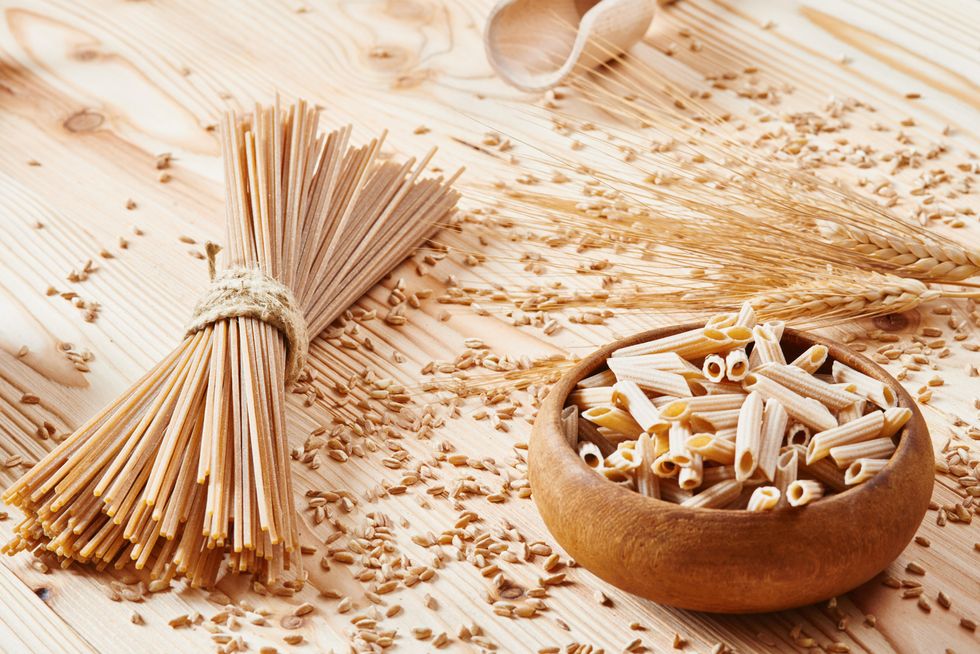
Today's standard wheat, the so-called “white flour”, is now a non-food, as it is extremely depleted of nutritional principles. Welcome rediscovery of varieties of ancient grains: the word to the experts.
“Wheat is one of the best foods in the world . It has everything: fibers, minerals, enzymes, proteins… In our tables, however, nothing comes of all this . Zero. Even double zero! ": Speaking is Alberto Fiorito, a homeopath expert in nutrition. Wheat, the nutritional basis of the famous Mediterranean diet, no longer nourishes today. But there is a solution: the return to ancient grains.
Ancient grains are nothing more than varieties of wheat grown in the past that have remained intact , i.e. they have not undergone any alterations (sometimes hybridizations, sometimes real genetic modifications) to make the product standardized and therefore easier and more productive from the point of view. of industrial view.
" The standardized ear reaches 1 meter and 10 cm for threshing - explains Fiorito -" an ancient variety such as Senatore Capelli (one of the easiest to find on the market, ed), the result of natural hybridization, grows to 1.80 meters ". The impoverishment of standard wheat and alternatives on the market was discussed in Genoa, among other things, at the conference "Health comes eating" organized by the Academy of Wellness . "It is a hybridized, hypertrophied wheat, created by a molecule of such a large grain - adds Giuseppe Di Fede, specialist in nutrigenomics , while with his hands he draws a full-bodied space - “We must rediscover ancient grains".
Standardization guarantees the use of pesticides and anticryptograms - with the harmful consequences for our health that we are now well aware of. Refining is the next step, and then the conservation treatments arrive: “The energy ratio remains unchanged, but the vitamin-mineral-fiber ratio is dramatically reduced , so it becomes an almost useless product, a 'dead calorie' . A demonstration is that after a while it paradoxically makes us hungry, because it steals them from our body: 100 gr pasta needs 5 molecules of vitamins C and 10 of magnesium to be digested; one good grain takes them with him, the other takes them away " - continues Fiorito.
“ Gluten is the protein part of wheat, a very important part because it helps by creating a sort of glue that holds the air bubbles together - those that give, for example, the softness of bread. But it means 'glue' and eating too much also means sticking the food in the intestine , with the risk that the feces stick to the wall of the intestine: a disaster ".
Ancient grains have less gluten, are less refined and richer in nutrients - from proteins to antioxidants; they are also lighter and more digestible, all this, however, to the advantage of taste! Not only that: they avoid the development of the famous intolerances that more and more people suffer from.
"When we are born we are all allergic, then we are trained, 'weaned' - says Francesco Balducci, a doctor expert in preventive anti-aging medicine - Today we wean 'adults from foods to which they have become intolerant over time".
The good news is that, if until recently, finding flours, pasta and products made with ancient grains was really difficult, today they have been rediscovered and are increasingly readily available, even in large-scale distribution. The aforementioned Senatore Cappelli ; the Sicilian Tumminia; Saragolla - same species as khorasan (to be clear, Kamut, which however is a registered trademark, is a specific variety of khorasan wheat with certain characteristics) which is grown mainly in Abruzzo and Lucania; the precious Gentil Rosso , of Tuscan origins, which for the first three decades of the twentieth century was the most cultivated wheat in Italy: these are some of the best known varieties of ancient wheat that are easily available today.
No intensive processing and organic production, a fundamental characteristic according to all the experts. Of course, the selling price is higher than the classic "white flour", but the nutritional quality is incomparable and therefore the value for our health. They are the result of the work and resistance of small producers, the soul of a valuable food economy.
We must ask ourselves what grain we eat. And make a conscious choice, also paying attention to controlled origin. "Now they pass off as ancient what it is not - asserts Balducci, who also warns about whole grains, which can be even richer in harmful substances such as glyphosates and scary aflatoxins - Never trust advertising and industrial foods but go personally to verify. The modern hunter-gatherer is this: he must go and look for elective foods " .







